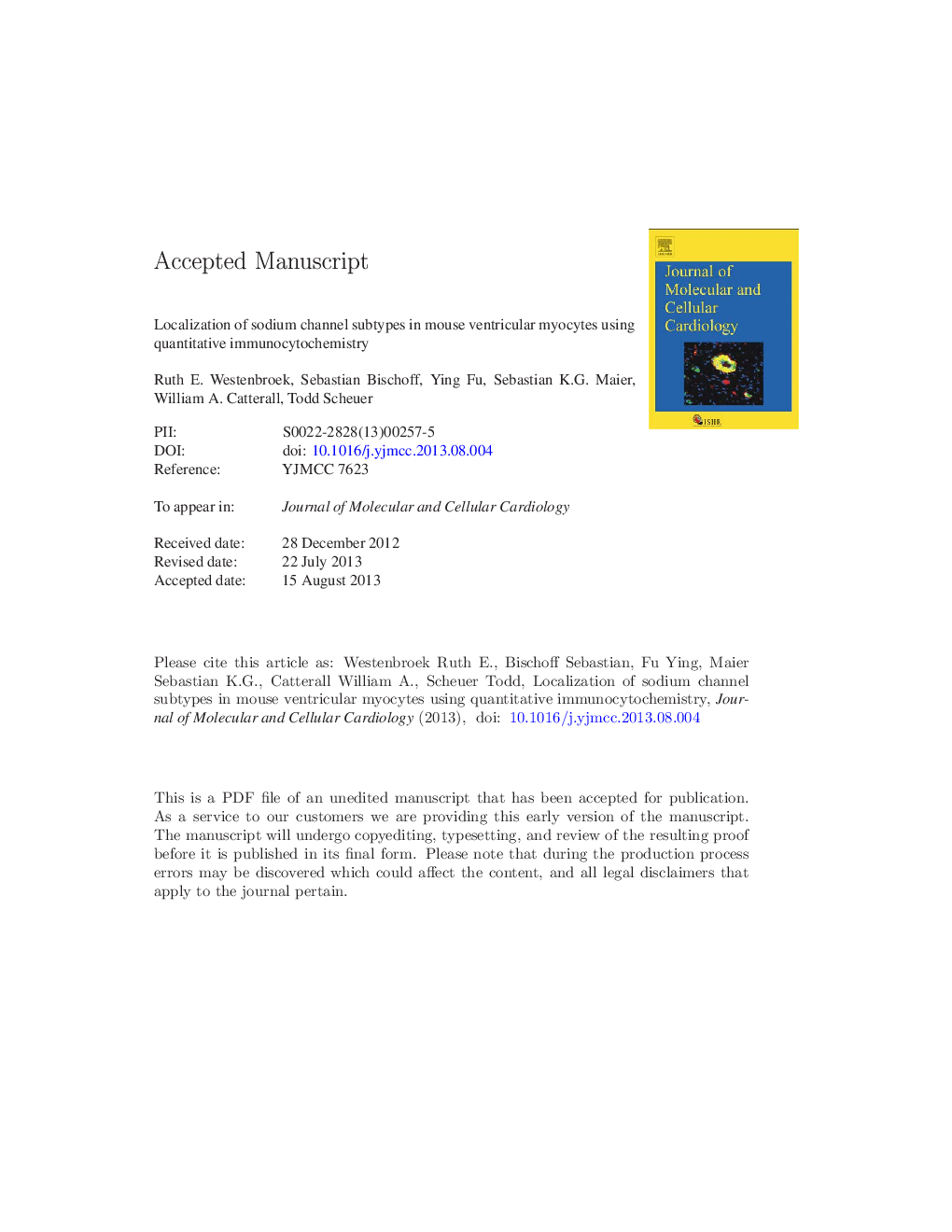| Article ID | Journal | Published Year | Pages | File Type |
|---|---|---|---|---|
| 8475014 | Journal of Molecular and Cellular Cardiology | 2013 | 31 Pages |
Abstract
Voltage-gated sodium channels are responsible for the rising phase of the action potential in cardiac muscle. Previously, both TTX-sensitive neuronal sodium channels (NaV1.1, NaV1.2, NaV1.3, NaV1.4 and NaV1.6) and the TTX-resistant cardiac sodium channel (NaV1.5) have been detected in cardiac myocytes, but relative levels of protein expression of the isoforms were not determined. Using a quantitative approach, we analyzed z-series of confocal microscopy images from individual mouse myocytes stained with either anti-NaV1.1, anti-NaV1.2, anti-NaV1.3, anti-NaV1.4, anti-NaV1.5, or anti-NaV1.6 antibodies and calculated the relative intensity of staining for these sodium channel isoforms. Our results indicate that the TTX-sensitive channels represented approximately 23% of the total channels, whereas the TTX-resistant NaV1.5 channel represented 77% of the total channel staining in mouse ventricular myocytes. These ratios are consistent with previous electrophysiological studies in mouse ventricular myocytes. NaV1.5 was located at the cell surface, with high density at the intercalated disc, but was absent from the transverse (t)-tubular system, suggesting that these channels support surface conduction and inter-myocyte transmission. Low-level cell surface staining of NaV1.4 and NaV1.6 channels suggest a minor role in surface excitation and conduction. Conversely, NaV1.1 and NaV1.3 channels are localized to the t-tubules and are likely to support t-tubular transmission of the action potential to the myocyte interior. This quantitative immunocytochemical approach for assessing sodium channel density and localization provides a more precise view of the relative importance and possible roles of these individual sodium channel protein isoforms in mouse ventricular myocytes and may be applicable to other species and cardiac tissue types.
Related Topics
Life Sciences
Biochemistry, Genetics and Molecular Biology
Cell Biology
Authors
Ruth E. Westenbroek, Sebastian Bischoff, Ying Fu, Sebastian K.G. Maier, William A. Catterall, Todd Scheuer,
